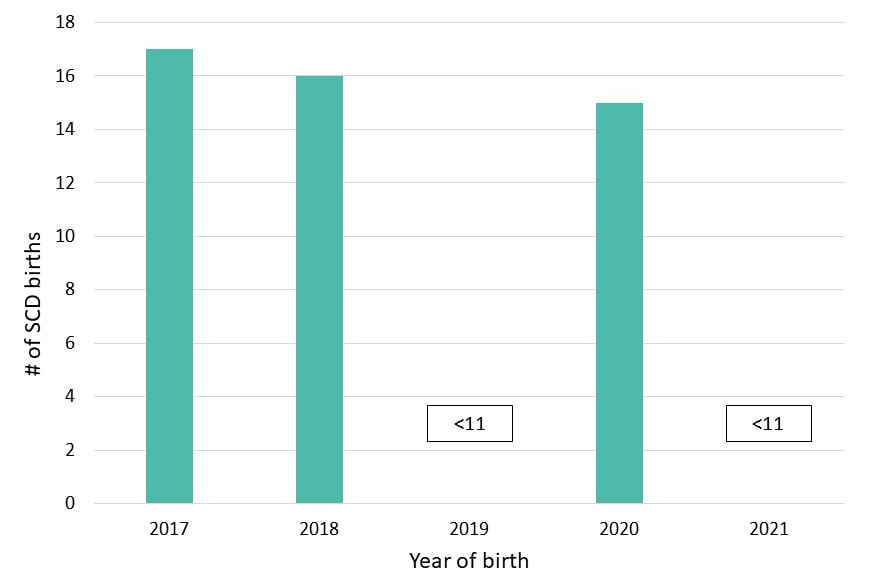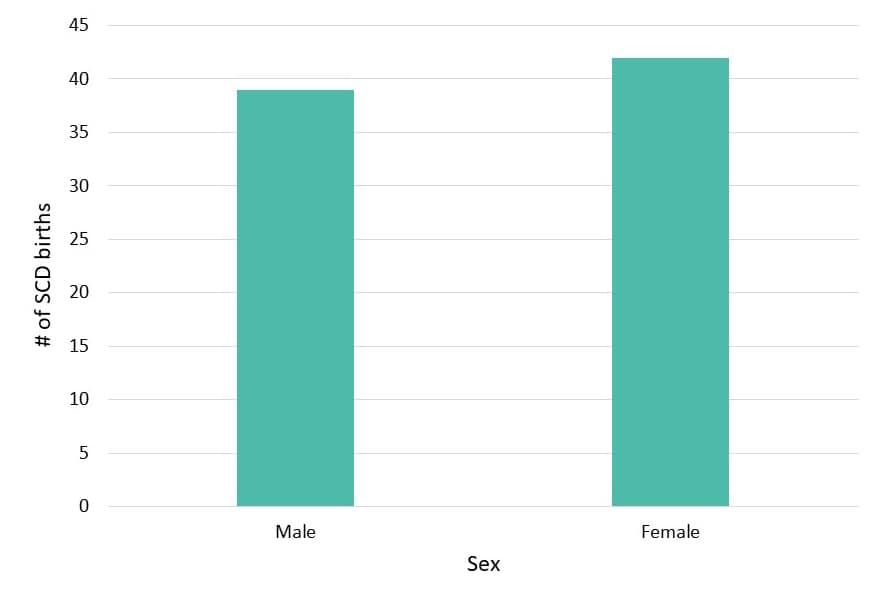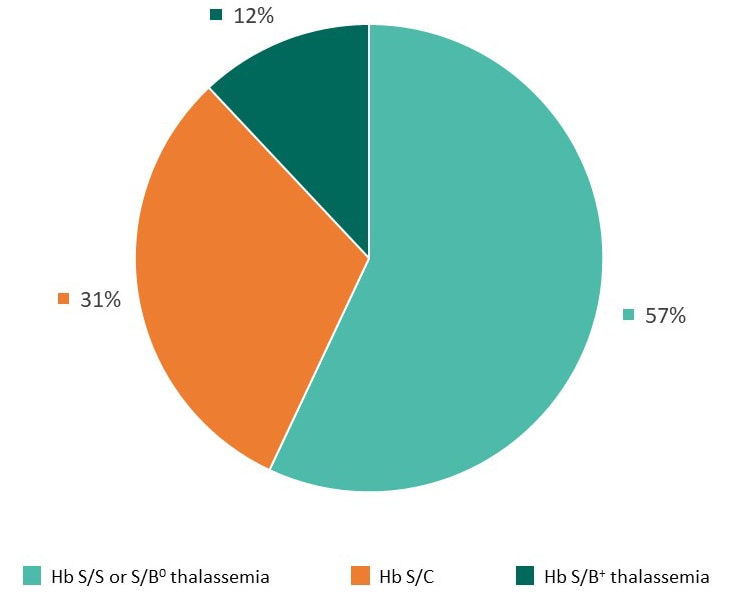Newborn Screening (NBS) Data, Colorado, 2017–2021

The Bloodline is a quarterly newsletter that provides updates about the SCDC program. Click here to read past newsletters, and subscribe to the newsletter to stay updated on the SCDC program’s health communications activities, data, presentations, and more.
The Sickle Cell Data Collection (SCDC) program monitors and reports on the health of people with sickle cell disease (SCD) over time. Data from the state’s newborn screening (NBS) program are an important part of the SCDC program because they provide information about the SCD births that occur every year. Colorado’s most recent NBS data, 2017–2021, are presented below.
The data provide the number of babies born with SCD in the state, their demographics, and their type of SCD. The people included in these data were born in Colorado during 2017–2021 and reported by the state NBS program with a confirmed diagnosis of SCD.
The individuals in the NBS data are also included in the Colorado SCDC program data for the years during which they were living in the state.

Figure 1. There was an average of 13 SCD births per year in Colorado during 2017–2021.

Figure 2: There were a total of 65 SCD births in Colorado during 2017–2021. There were 39 male births (60%) and 26 female births (40%).
*NOTE: The sum of all categories may be less than the total number of births if there are individuals with missing data.

Figure 3: Fifty-seven percent of the SCD births in Colorado during 2017–2021 were babies with hemoglobin (Hb) S/S or S/β0 thalassemia, 31% were Hb S/C, and 12% were Hb S/β+ thalassemia.
*NOTE: The sum of all categories may not total to 100% due to rounding errors.
